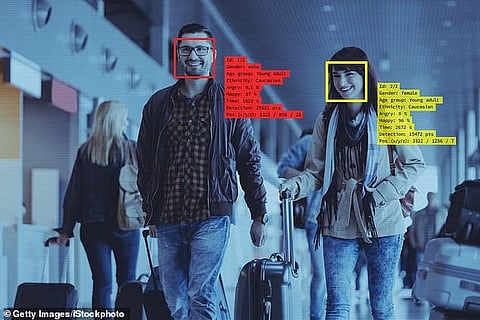

On a busy day of travel at the airport, what do you see? One huge queue that starts from curb to gate when you must zigzag between retractable barriers move swift from one point to the next, detouring and jamming through the terminal. The check-in, baggage drop, security checks, the warm coffee at the coffee shop, the boarding gate, the halting march down the tarmac and the flight.
Imagine a future free of security gates! You just have to walk to your plane which is as easy as you unlock your phone, without having to worry about the dangers that come with air travel. Enter the world of technology where your biometric data is all that is important for your check-in. Major airports at the US are using facial recognition and other AI-powered techniques to recognize, authorize, and screen you. Sounds Creepy?
Soon, you could walk into the international terminal of almost any US airport and board a plane without showing anyone your passport.
All you have to do is to pose in front of an Airport camera which will scan your face and send your image to a remote system which matches it to a stored copy of your passport photo you have shown at the check-in counter. Subsequently, you will have your photo taken when you stand at the security line, and finally at the gate. If everything still matched up, you'd be on board, quietly warring with your seatmate over the armrest.
Rolled out at 17 airports in the US, the US Customs and Border Protection program also called as Biometric Exit, includes a face-matching system deployed at departure gates. And that might be appealing to you; after all, it should expedite the boarding process (no exchange of documents probably saves you a few seconds and some effort), but there are plenty of reasons why opting out might prove a better decision in the end.
How does an airline let you board without showing proof of a single physical document? According to the U.S. Customs and Border Protection's website, international travelers at participating airports have their photograph taken before boarding at the gate (or while exiting customs); this information is then matched to images from passports, visas, and other travel documents, provided by the Department of Homeland Security.
It's a laborious and fancy way of replacing the function that a human engages in when they look at your passport photo and look at your face and make a judgment about whether [you're] the same person. It is based on the theory that facial recognition software is better than human judgment, which is really not clear.
If you're a U.S. citizen, your photo will only be retained for up to 12 hours. If you're a departing non-U.S. citizen, however, CBP will keep your photo for up to two weeks. If you're a non-U.S. citizen arriving at a participating airport, CBP can store your photo for 75 years, as Buzzfeed News writes, bringing up a number of privacy and data issues and who has access to your information.
Facial recognition is alarming for a lot of reasons.
The airport authorities know you're on that flight and they know who you are based on the biographical data you've given the airline and your passport.
The concerns, however, are much broader as it relates to non-U.S. citizens or people of color and the potential for false positives. The system might be used to pressure and bully non-Americans and coms with serious accuracy problems. There's a higher error rate about people with darker skin. Some of that is because of the way that AIs are trained on sample databases that are predominantly white.
Currently, the facial recognition pilot program is operating in several major airports like John F. Kennedy International and Los Angeles International Airport and through major airlines like JetBlue, Delta, and British Airways (in addition to one cruise liner, Royal Caribbean).
Though this technology is dominant at a number of airports, you do have the option to opt out of this process. All you have to do is opt out of the recognition software by requesting an alternative screening process while in line at the gate.
The airport authorities will examine your passport or physical documents manually, as they would any other time you've boarded a flight. Opting out can have an effect; the government isn't impervious to the opinion of the traveling public. And if you do have concerns, voice those to an airline whether in person or by Twitter, too, so you can make sure this process doesn't become a requirement, instead of an option.
Join our WhatsApp Channel to get the latest news, exclusives and videos on WhatsApp
_____________
Disclaimer: Analytics Insight does not provide financial advice or guidance. Also note that the cryptocurrencies mentioned/listed on the website could potentially be scams, i.e. designed to induce you to invest financial resources that may be lost forever and not be recoverable once investments are made. You are responsible for conducting your own research (DYOR) before making any investments. Read more here.
